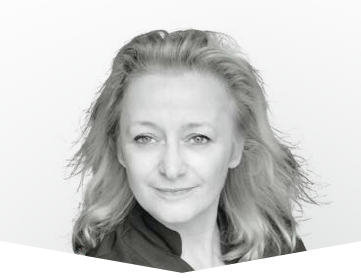Dr Sandra Texier
Skin quality after the summer: understanding, reviving and repairing the skin with the art of aesthetic medicine. Discover how to preserve the skin, improve its quality, repair any sun damage and achieve a radiant complexion.
 Every year, the summer gives our skin a lovely, natural glow but when September comes around, many people notice this radiance fade away. Their complexion becomes dull and tired. Acne and pigmentation marks may also appear. This change is mainly due to the effects sun exposure has on the skin. Skin radiance is a delicate balance of interconnected factors, such as hydration, the natural exfoliation of the dead cells in the epidermis, skin elasticity and collagen production, and the evenness of the skin tone. Because this phenomenon is so complex, we need to adopt a multifactorial approach to maintain or restore the skin quality. Various medical and aesthetic solutions can be used to correct and restore these different elements.
Every year, the summer gives our skin a lovely, natural glow but when September comes around, many people notice this radiance fade away. Their complexion becomes dull and tired. Acne and pigmentation marks may also appear. This change is mainly due to the effects sun exposure has on the skin. Skin radiance is a delicate balance of interconnected factors, such as hydration, the natural exfoliation of the dead cells in the epidermis, skin elasticity and collagen production, and the evenness of the skin tone. Because this phenomenon is so complex, we need to adopt a multifactorial approach to maintain or restore the skin quality. Various medical and aesthetic solutions can be used to correct and restore these different elements.
The skin’s reactions
We classify the skin’s reaction to sun exposure according to the appearance of the various signs: first come the immediate reactions such as a tan and vitamin D synthesis, then come the delayed reactions. The latter can be addressed in a doctor’s practice, just after the summer.
They are triggered by several processes that aim to protect the skin from the sun’s rays. We might see a thickening in the stratum corneum, which is superficial layer of the epidermis. This process is called hyperkeratosis. This reaction leads to an accumulation of sebum that cannot be evacuated properly. Acne reappears when the skin becomes thinner. The epidermis can also become dehydrated when exposed to the sun’s rays, which accentuates the skin’s dull and tired appearance, emphasising fine lines and wrinkles along with a feeling of discomfort in the skin.
Pigmentation marks appear when there is an abnormal accu-mulation of melanin, the pigment responsible for the skin colour. This melanin is produced by specific cells, the melanocytes, under the stimulation of the sun’s rays. When the skin is exposed to the sun’s ultraviolet rays, it reacts by producing more melanin to protect itself from damage. However, this response can become excessive and lead to irregular areas of pigmentation such as solar lentigos and melasma. Though they are generally harmless, these pigmentation marks can have important aesthetic implications and give the skin an aged, irregular and blemished appearance.
Solutions to repair the skin’s radiance
Aesthetic medicine offers a wide range of solutions to repair and improve skin radiance.
– Chemical peels are particularly useful after the summer because they allow us to work on the complexion by exfoliating the dead cells of the epidermis in a controlled way. We either perform a “superfi cial” peel to exfoliate the superficial layer of the epidermis, or a “medium” peel to exfoliate down to the dermo-epidermal layer. These focus on radiance and the signs of aging, pigmentation marks, post-summer acne and acne scars. We have several molecules of hyaluronic acid at our disposal, with various possible combinations. We can tailor our treatments according to the skin type and the patient’s individual concerns. Personally, I use various combinations of acids to treat each skin type in an appropriate and evolutive way. At this time of year, I often use mandelic acid on its own or combined with other molecules because it is suitable for all skin types. I particularly like its tolerance and versatility, as it acts upon hydration, the complexion’s radiance and the skin texture. The advantage of peels is also being able to combine them with other medical aesthetic treatments. The results are rapidly visible in terms of the complexion’s radiance. The protocol varies from 1 to 4-6 sessions.
– Hyaluronic acids with different molecular weights are injected into the dermis to restore the skin’s hydration, elasticity and tonicity after the summer. Hyaluronic acid is a polysaccharide that is naturally present in the human body. Its primary function is to maintain hydration at its correct levels. I use this procedure in the face, neck and decolletage, as well as on the body, with two sessions spaced a month apart.
– The jet peel treatment is a comprehensive treatment carried out in several stages that gives an immediate radiance boost. The technique used is barophoresis. The active ingredients are infused onto the skin through air jets, as opposed to injections. During treatment, the skin benefi ts from exfoliation with various acids, hydration from hyaluronic acid, an infusion of vitamin C for radiance, sebum-regulating products for acne, niacinamide, peptides, vitamin B5 and more.The skin immediately looks more radiant! The recommended protocol varies from 1 to 4 sessions per month, as an intensive course of treatment.
– Microneedling on its own or combined with fractional radiofrequency can improve the skin’s radiance and texture, as well as other issues such as acne scars and sagging skin. The latter two techniques are effective for triggering the skin’s natural regeneration. Autumn is the ideal time to start these treatments, as you need to stay out of the sun. The skin has a superb ability to regenerate, repair itself and recover its lost radiance, particularly when medical aesthetic solutions are employed.The key to restoring its radiance is personalising the treatments.
 Dr Sandra Texier: Having trained as a GP, I later became a nutritionist and hypnotherapist before getting a university diploma in anti-aging and morphological medicine. My centre, the Maison Magnifisens, which I founded, combines these skills to improve self-esteem, wellbeing and beauty without compromising health. I am committed to helping my patients flourish.
Dr Sandra Texier: Having trained as a GP, I later became a nutritionist and hypnotherapist before getting a university diploma in anti-aging and morphological medicine. My centre, the Maison Magnifisens, which I founded, combines these skills to improve self-esteem, wellbeing and beauty without compromising health. I am committed to helping my patients flourish.
More informations: maison-magnifisens.paris















